Vizio V-Series vs Vizio M-Series: Which should you buy?
Which of Vizio's newest mid-range TVs is right for you?
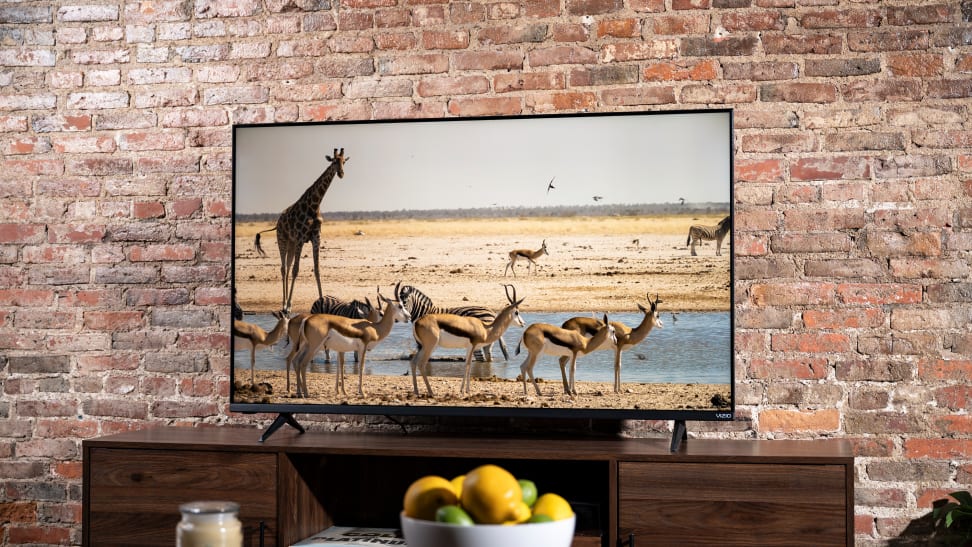 Credit:
Reviewed / Jackson Ruckar
Credit:
Reviewed / Jackson Ruckar
Products are chosen independently by our editors. Purchases made through our links may earn us a commission.
Over the past decade, Vizio has risen to prominence by offering fantastic TVs with cutting-edge features, often accompanied by aggressively competitive price tags. In many ways, Vizio’s success can be attributed to its terrific track record of carefully cutting corners while still giving shoppers what they want: dependable, value-packed TVs that don’t skimp on features or performance. But determining between TVs in Vizio's catalog, which use a letter to determine each different series, can be pretty confusing. That's why we're here!
The Vizio V-Series and the Vizio M-Series are from Vizio's lineup of mid-range TVs for 2021 and beyond. They’re similar in cost, similar in hardware, and share the same goal: to offer a great, versatile experience for a friendlier price than the competition. But there are also some critical differences between the two that you ought to know before reaching for your credit card.
Buy the Vizio M-Series at Walmart
Buy the Vizio V-Series at Best Buy
Price
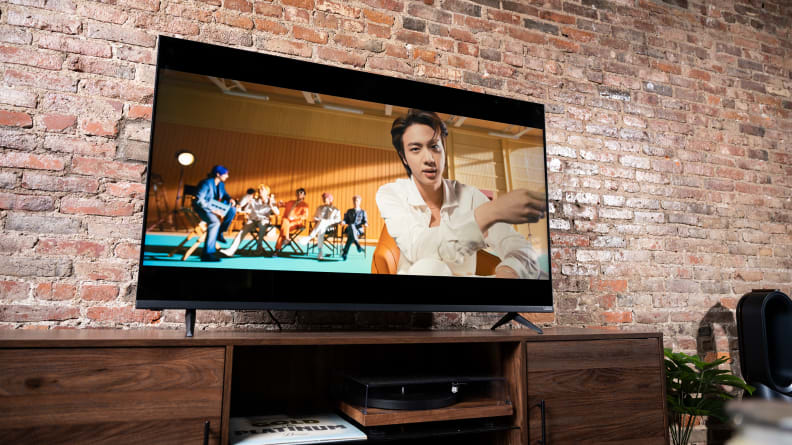
The M-Series and the V-Series are available in several size options, ranging from 43 inches to 75 inches.
Like most of Vizio’s 2021/2022 lineup, the V-Series and M-Series feature two distinct variants, each with slightly different hardware and functionality. For the purposes of this head-to-head matchup, we’ll be looking at the versions of each TV that we’ve tested and reviewed.
Vizio V-Series (V5):
The primary V-Series lineup—referred to as the “V5” V-Series—is available in seven size options ranging from 43 to 75 inches. Alternatively, the “V6” V-Series is available in 70- and 75-inch sizes, both of which feature improved gaming performance.
Here’s how the V5 V-Series lineup shakes out for pricing:
- 43-inch (V435-J), MSRP $339.99
- 50-inch (V505-J), MSRP $399.99
- 55-inch (V555-J), MSRP $499.99
- 58-inch (V585-J), MSRP $529.99
- 65-inch (V655-J), MSRP $599.99
- 70-inch (V705-J), MSRP $699.99
- 75-inch (V755-J), MSRP $899.99
Vizio M-Series (MQ6):
Similar to last year’s M-Series, whose Q7 and Q8 variants featured different hardware specs, the newest M-Series is also available in two variants: the MQ7 (which we’ve yet to test), and the MQ6. Despite differences in hardware, both variants fall under the M-Series namesake for the purposes of Vizio’s 2021/2022 lineup.
There are six size options available for the MQ6 variant. Here’s how each size shakes out from a price standpoint:
- 43-inch (M43Q6-J), MSRP $399.99
- 50-inch (M50Q6-J), MSRP $529.99
- 55-inch (M55Q6-J), MSRP $579.99
- 65-inch (M65Q6-J), MSRP $679.99
- 70-inch (M70Q6-J), MSRP $849.99
- 75-inch (M75Q6-J), MSRP $999.99
While somewhat close in price, all of the V-Series’ size options are more affordable than their M-Series counterparts. In addition, the V-Series is available in a 58-inch model, while the M-Series is not.
Our pick: Vizio V-Series
Design
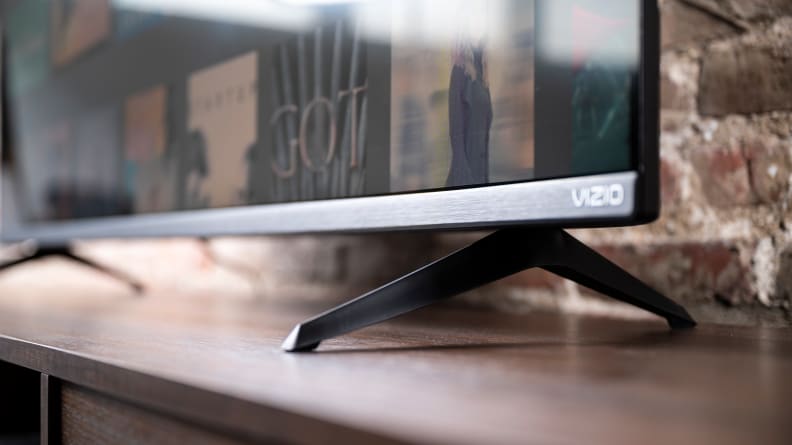
Both TVs feature wide-set, boomerang-shaped feet that feel sturdy and keep the panel from wobbling. (photo: M-Series)
It’s not uncommon for TVs of the same year to share cross-series design elements, and such is the case for Vizio’s 2021/2022 TV lineup. In fact, if you were to place the 55-inch V-Series next to the M-Series while each TV was turned off, you might have a hard time figuring out which is which.
Both are charcoal-colored rectangles fixed atop wide-set, boomerang-shaped feet that act as the TV stand. It’s the sort of look that will be familiar to anyone who’s been keeping up with TV design trends over the last several years. The V- and M-Series don’t have the premium fit and finish of posh, high-end TVs, but they will blend seamlessly into most living spaces.
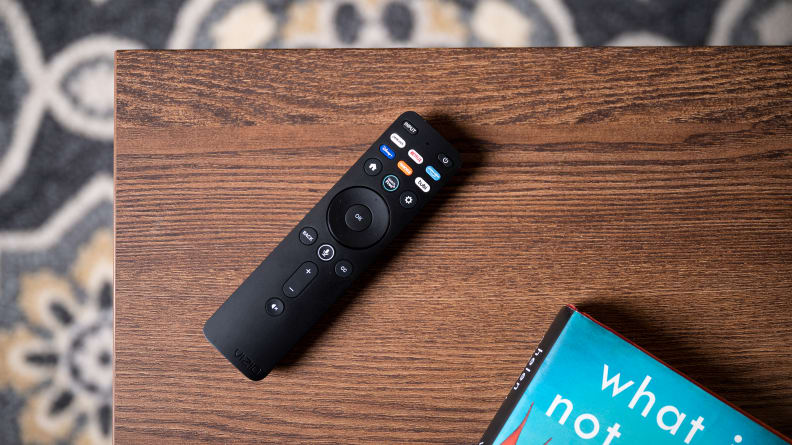
Both TVs come with the same remote control, which features push-to-talk voice recognition.
The V- and M-Series’ remote controls are also similar, looking slightly different from the Vizio clickers of years past. Buttons have been reduced to the bare essentials (though you’ll still find dedicated app buttons for popular streaming apps). Both remote controls now offer a push-to-talk button that activates voice recognition software—something you don’t often find in this price bracket.
All told, it’s almost impossible to pick a winner in this category. Both TVs are sturdy in build quality and inoffensive from a design standpoint. They don’t push the boundaries of television design, but they’ll easily slot into any room without disrupting the flow.
Our pick: Draw
Features and smart platform
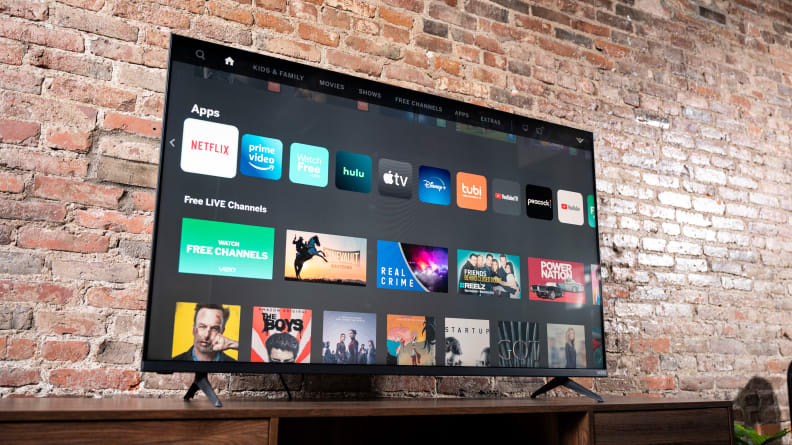
Both the M-Series (seen here) and the V-Series feature the newest version of Vizio's smart platform.
Before we dive into the nitty-gritty details of what sets these two TVs apart, let’s take a closer look at the hardware and software features shared by both the V-Series and the M-Series.
- 4K resolution
- HDR (Dolby Vision, HDR10, HDR10+, HLG)
- HDMI 2.1 (3x)
- 60Hz refresh rate
- eARC
- Auto Low Latency Mode (ALLM)
- Google Chromecast, Google Assistant, Alexa, Apple AirPlay 2
In addition to the specs listed above, both TVs come with the newest version of SmartCast, Vizio’s proprietary smart platform.
The M-Series has two major advantages over the V-Series that will factor into your experience: quantum-dot color, a display enhancement designed to offer brighter and more voluminous color, and FreeSync, a sought-after gaming feature.
With quantum dots in tow, the M-Series’ display is capable of producing brighter, richer colors than those produced by the V-Series, particularly during content mastered for High Dynamic Range (HDR). If you fancy yourself a cinephile—or if you simply want to pick the TV with the brighter, more colorful picture—the M-Series is better-suited for your needs.
On the gaming side of things, the inclusion of FreeSync ensures that a video game’s frame rate is being accurately represented on the screen. In other words, it eliminates the screen tearing effect that often accompanies high-frame rate gaming. To be fair, this feature can be found on the two V6 variants of the V-Series, but these two models are 70 and 75 inches respectively, so you’ll have to feel comfortable investing in a huge (and more expensive) TV.
Our pick: Vizio M-Series
Performance
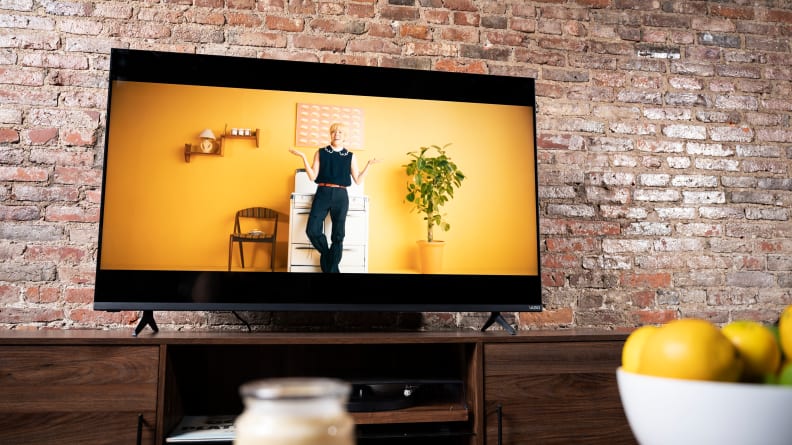
The M-Series (seen here) features quantum dot-color, which partially explains why its out-of-the-box color production is so rich and accurate in the TV's "Calibrated" picture mode.
Being mid-range TVs, the V-Series and M-Series aren’t built to output the sort of eye-popping picture quality you might see on TVs that are two or three times as expensive. If that’s the sort of performance you’re after, there are several incredible, premium Vizio TVs that ought to do the job, along with plenty of great picks in our Best TVs guide.
The V- and M-Series are budget-friendly options for the masses. They look great in the dark, for the most part, but might have trouble looking their best in brightly lit environments. When it comes to color production, both TVs get good marks—in Vizio’s “Calibrated” picture mode, out-of-the-box calibration is superb.
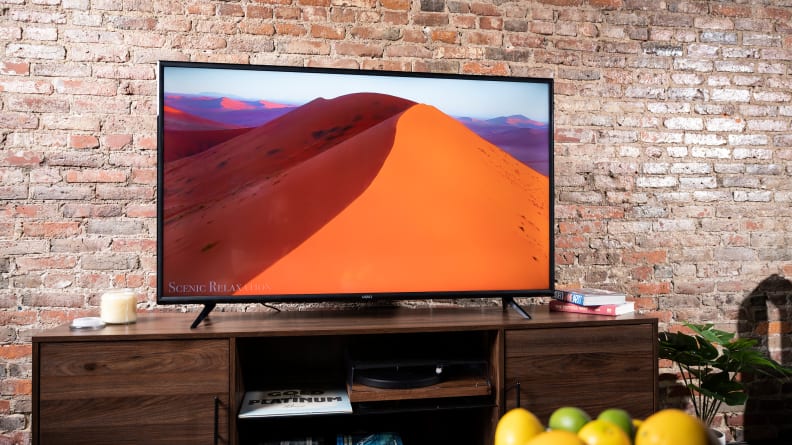
The V-Series' (seen here) color production is quite impressive for a TV in its price range.
So who’s got the edge? It’s the M-Series, on account of its quantum-dot display mentioned above and added luminance. Colors simply look better on the M-Series, with extra-saturated reds and greens improving shades across the board. In addition, the M-Series is able to output a brighter overall picture, especially while receiving an HDR signal. It’s not brighter by an order of magnitude, but it’s bright enough to notice while sitting in a room with an average amount of lighting.
While both TVs fall short of delivering the visually striking look of top-shelf HDR performance, the M-Series is undoubtedly the better performer of the pair.
Our pick: Vizio M-Series
And the winner is…
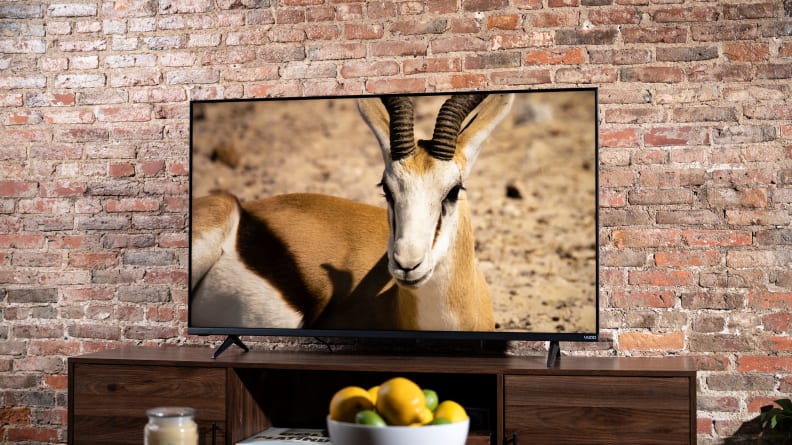
The prices of the M-Series (seen here) and the V-Series aren't too far apart, and the M-Series' inclusion of quantum dots and FreeSync are probably worth spending a little bit more.
While the V-Series wins in the all-important category of price, the M-Series offers better performance and a couple of additional enhancements for your money. The superior color production, added luminance, and inclusion of FreeSync will improve the experience for everyone, but especially avid gamers.
Additionally, if you compare the two series on a size-by-size basis, the M-Series isn’t that much more expensive than the V-Series. The 55-inch M-Series, for example, is only about $80 more than the 55-inch V-Series. That $80 is easy to justify if, for example, you’ve just invested in an Xbox Series X or PlayStation 5.
This is not to say that the V-Series is a slouch, however. As we mentioned in our V-Series review, there aren't very many TVs on the lower end of the mid-range price spectrum, and the V-Series is sure to satisfy shoppers who just want a basic set of smart features and a halfway-decent picture.
If you don't mind spending more to climb one rung higher than the MQ6 version of the M-Series, consider the MQ7 M-Series. We've yet to test this version of the M-Series, but it's designed for better performance and is available in several size options. While we expect the MQ7 to offer better performance than the MQ6 M-Series, we can't say for sure until we take it for a spin in our test lab.


